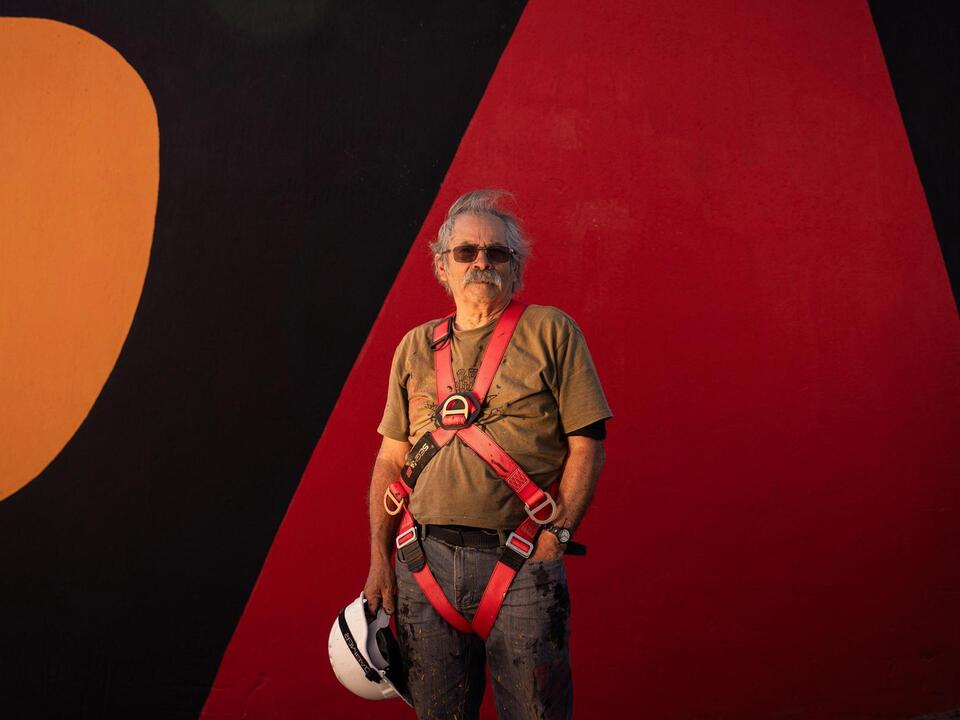Physical Address
304 North Cardinal St.
Dorchester Center, MA 02124
Physical Address
304 North Cardinal St.
Dorchester Center, MA 02124

In Chile, walls and public buildings serve as blank canvases for expressing dissent, frustration, and hope.
Bridges in the Atacama desert are covered with slogans demanding equitable water distribution, while graffiti on rural bus stops call for the restitution of Indigenous lands. Every inch of Valparaíso, the bohemian port city, is adorned with paint and posters.
“Chile is a nation of muralists,” said Patricio Rodríguez-Plaza, an academic at the Pontificia Universidad Católica de Chile who studies street art. “Our walls are where we communicate – it’s how we use our public space.”
One renowned artist, dressed in paint-spattered jeans, spent two weeks transforming a water tower at the national stadium into a symbol of Chile’s battle to remember its past.
“I have always had a strong social conscience,” Alejandro “Mono” González explains. “The fight was born inside me, it just didn’t have an escape. There’s so much you can say with paint and a blank surface.”
At 77, González has painted across Latin America and Europe, with his murals also found in China, Cuba, and Vietnam. His giant creations, featuring bright petals separated by thick black lines, resemble stained-glass windows.
“I wouldn’t say it’s cheerful, but they’re hopeful colors, which go beyond victimhood, pain, and sadness,” he noted.
The stadium was one of Chile’s most notorious detention centers, where thousands were held after Gen Augusto Pinochet’s 1973 coup. The water tower is where detainees rested briefly during their grim journey between the changing rooms and torture chambers.
González speaks animatedly about how colors vibrate and interact. His work often evokes themes of social struggle, injustice, and memory. “In the streets, anonymity is important,” he says. “The individual isn’t, it’s the message that is interpreted by the viewer that I care about.”
Born in Curicó in 1947, González was the son of a laborer and a rural worker. Nicknamed “Mono” – monkey – by his friends due to his energetic personality, the name has followed him throughout his life.
As a child, González would paint with his parents, both committed members of Chile’s Communist party. Art became his outlet for his strong social conscience.
He joined the communist youth in 1965, painting his first mural at 17 for socialist candidate Salvador Allende’s presidential campaign. He co-founded the Brigada Ramona Parra, a street art and propaganda collective, during Allende’s campaigns.
After Allende won the presidency in 1970, a sinister black spider began to appear on walls, sprayed by a fascist paramilitary group. A battle for the streets ensued, a struggle that continues to this day.
In 2019, protesters thronged Chile’s cities, demanding better living conditions and an end to entrenched inequalities. Hundreds of thousands of Chileans transformed Plaza Baquedano in Santiago into a living canvas of discontent.
Among them were members of Todas, a collective of over 100 female muralists. “We organized ourselves so we could occupy the walls,” said Paula Godoy, an artist and muralist from southern Santiago. “It was a really beautiful period. We were all pulling in the same direction, trying to achieve something.”
At 24, González witnessed the rise of Pinochet’s regime in 1973. The propaganda brigades disbanded; some members went into exile, others were murdered or disappeared. González went underground, changing his appearance and working as a set designer under the alias Marcelo.
When the dictatorship neared its end, González helped design the NO campaign against Pinochet’s continued rule in the 1988 plebiscite.
Last year, he was nominated for Chile’s national art prize for the third time. Although he didn’t win, a fourth nomination would come as little surprise – though he doubts he’ll ever win. “It would mean recognizing everything I’ve done, including the social struggle, because that’s what I represent,” he remarked.
González says his mural on the water tower, and its permanence, is more important. “Chile is very conservative and reactionary – we advance, and then we go backwards,” he explained. “But memory is the one constant. The most important thing is having a lasting effect. This will still be here in 50 years’ time, and people will still have their memory.”
Source: The Guardian



